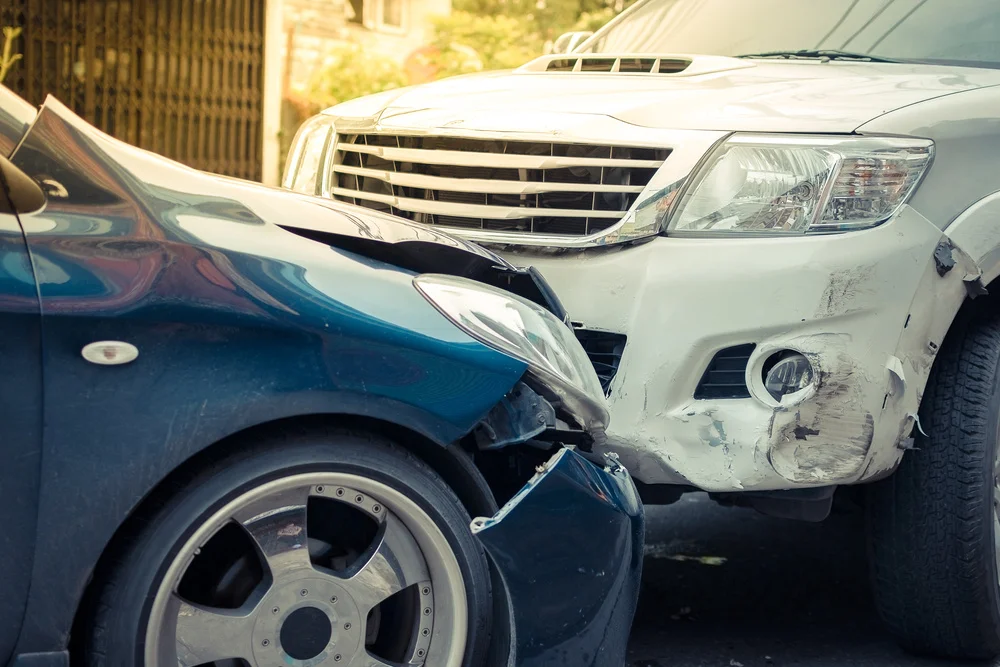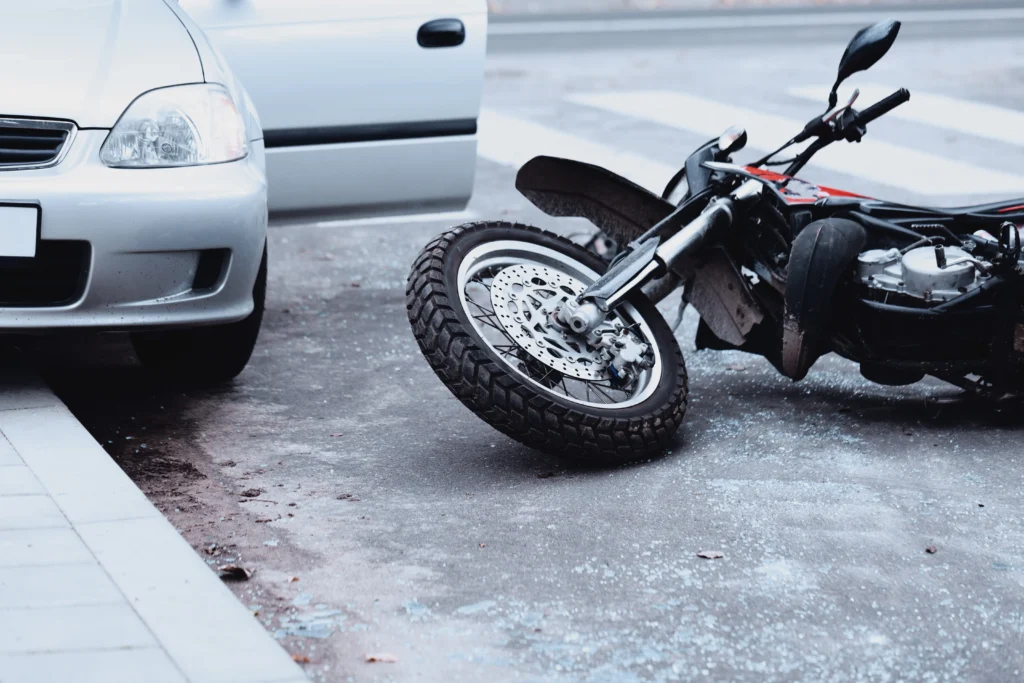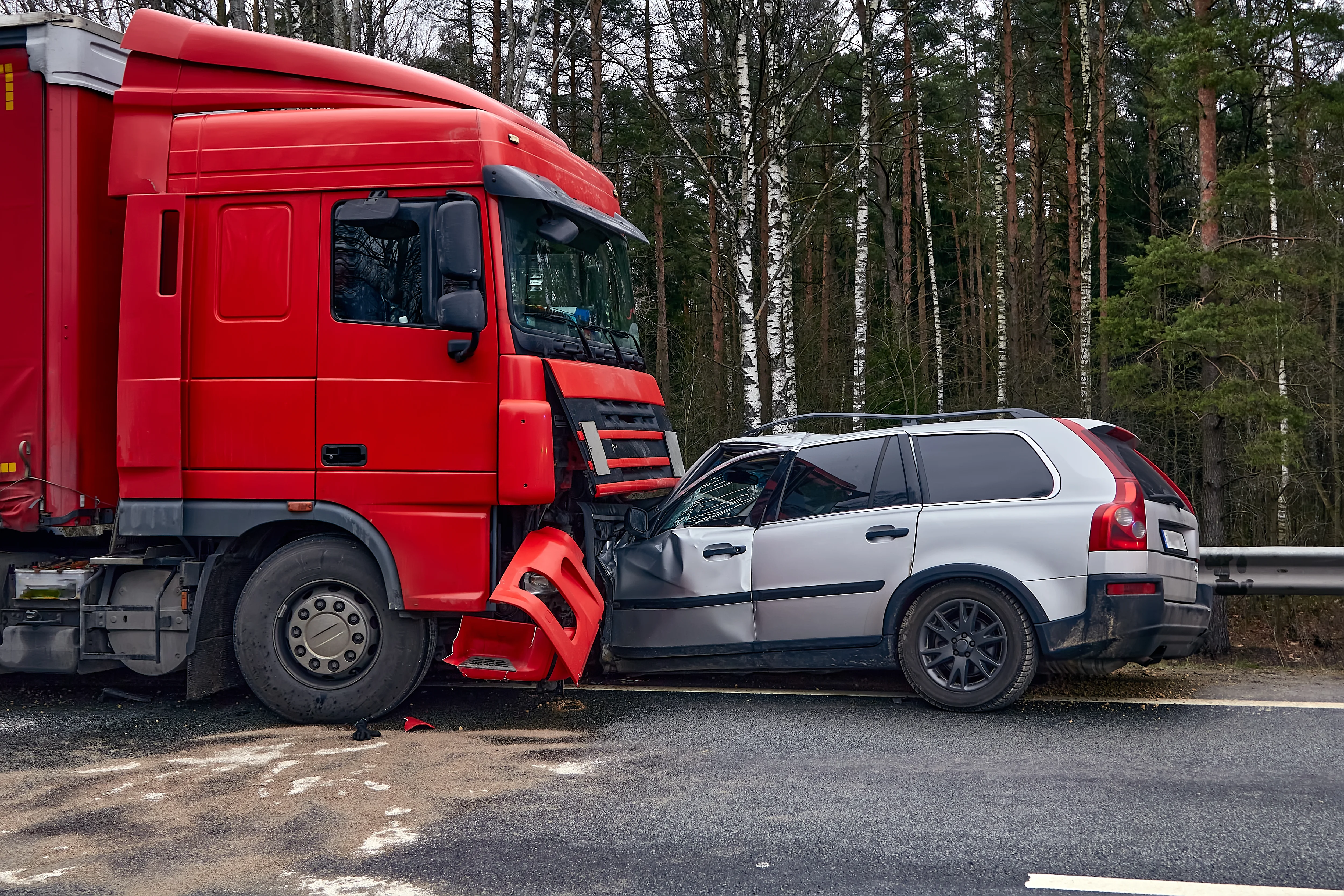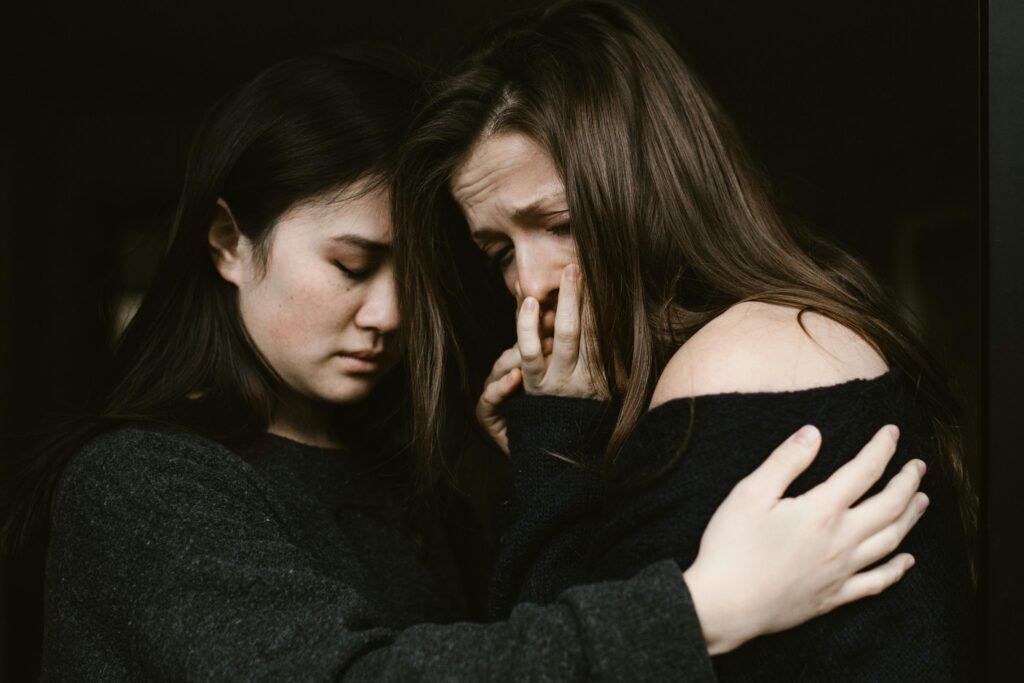Pursuing Justice for Seattle Families After a Wrongful Death
Losing a loved one is always devastating, but when the death is caused by someone else’s negligence, the grief is compounded by confusion, anger, and legal uncertainty. In Seattle, wrongful death claims offer a path for families to seek justice and hold at-fault parties accountable. Whether the tragedy occurred due to a car crash on I-5, a pedestrian accident in Capitol Hill, or a fatal fall on unsafe property in Belltown, Washington law gives survivors the right to pursue compensation for their losses.
At Bernard Law Group, we represent grieving families throughout King County with compassion and aggressive advocacy. We know that no amount of money can ever replace a loved one, but a successful wrongful death claim can provide critical financial support and help ensure that negligent individuals or businesses are held responsible.
If you lost a family member due to another party’s wrongful actions, you don’t have to go through this process alone. Call Bernard Law Group at (206) 752-2233 or visit our Seattle wrongful death contact page to schedule a free consultation. We never charge legal fees unless we win your case.
How Washington Law Defines Wrongful Death in Seattle
Understanding how wrongful death works under Washington law is critical for families in Seattle who are navigating the aftermath of a preventable fatal accident. These claims are not criminal prosecutions but civil lawsuits designed to hold negligent individuals, businesses, or entities financially accountable for the harm they caused. The Revised Code of Washington (RCW) provides a specific legal framework that governs who can file, what damages can be recovered, and how liability is determined.
Wrongful death cases in Seattle often involve fatal car accidents on Interstate 5, pedestrian collisions on Aurora Avenue, medical malpractice at facilities like Harborview Medical Center, or unsafe conditions in apartment buildings or commercial spaces. Regardless of the cause, Washington’s wrongful death statute offers a legal mechanism for surviving family members to pursue justice and compensation.
You can review the core law governing wrongful death in RCW § 4.20.010 on the Washington State Legislature’s website. It defines a wrongful death as one caused by the wrongful act, neglect, or default of another person or entity. This definition forms the legal foundation for all wrongful death lawsuits in Seattle.
Who Can File a Wrongful Death Claim in Seattle
Not all family members have the legal authority to bring a wrongful death claim under Washington law. The state designates specific beneficiaries who are eligible to seek compensation, and these rules are strictly applied by the courts.
The official claim must be filed by the personal representative of the deceased’s estate. However, they file the lawsuit on behalf of surviving relatives who are entitled to damages. These beneficiaries typically include the deceased’s spouse or registered domestic partner, biological or adopted children, and in some cases, stepchildren or parents. You can find more information about who qualifies by reviewing RCW § 4.20.020 on the Washington Legislature site.
Courts may also allow parents or siblings to pursue claims if no spouse, partner, or child survives. The Washington State Bar Association offers additional resources to help families understand legal standing in wrongful death matters.
Spouses and Domestic Partners Have Priority Under the Law
Washington law places the highest priority on the surviving spouse or domestic partner when assigning the right to file a wrongful death claim. This legal recognition reflects both the financial and emotional loss experienced by someone who shared a household, income, and daily life with the deceased. Damages can include lost income, loss of companionship, emotional pain, and the loss of household services. The Washington Department of Social and Health Services provides mental health and support resources for grieving spouses and partners dealing with traumatic loss.
Financially Dependent Children and Stepchildren May Be Eligible
Minor children, adult children, and even stepchildren may recover compensation in a wrongful death claim if they relied on the deceased for financial support. Courts assess the relationship and level of dependency when determining eligibility. In many Seattle cases, this includes children enrolled in college or those with disabilities who remain financially dependent into adulthood. The Social Security Administration’s Survivors Benefits page outlines federal benefits that may be available in addition to a wrongful death settlement.
What Is the Difference Between a Wrongful Death Claim and a Survival Action
Washington law permits families to pursue both a wrongful death claim and what is known as a survival action. These two legal tools serve different purposes but may be joined in the same lawsuit.
A wrongful death claim seeks to compensate the family for the impact of the loss. A survival action, on the other hand, focuses on the damages the deceased person could have claimed had they survived the incident. This may include medical expenses, lost wages, and pain and suffering experienced between the injury and the time of death. The right to bring a survival action is outlined in RCW § 4.20.046, which you can read in full on the Washington Legislature’s civil procedure section.
When to File Both Claims Together
In Seattle, many fatal accidents involve prolonged hospital stays or emergency interventions at facilities like Swedish Medical Center or UW Medical Center. In those cases, the victim may have experienced significant pain, fear, or emotional distress before passing away. A survival action allows the estate to recover compensation for those moments of suffering. The National Institute of Mental Health provides insights on the psychological trauma experienced by victims before death, a key consideration when calculating damages under RCW § 4.20.046.
What Types of Damages Are Recoverable in a Seattle Wrongful Death Case
Families pursuing a wrongful death lawsuit in Seattle may recover both economic and non-economic damages. These include measurable financial losses as well as intangible harms that affect quality of life and emotional well-being.
Courts allow recovery for funeral and burial expenses, loss of future earnings, medical bills incurred before death, and loss of household services. In addition, families may be awarded compensation for loss of love, affection, guidance, companionship, and emotional support. The Centers for Medicare & Medicaid Services provides data on end-of-life healthcare costs, which often form a significant portion of economic damages in these cases.
Using Expert Testimony to Support a Damages Claim
To properly value a wrongful death case in Seattle, attorneys often rely on economists, vocational rehabilitation experts, and medical professionals. These experts help quantify the lifetime earnings the deceased would have provided and the long-term impact of the loss on surviving family members. The U.S. Bureau of Labor Statistics is frequently referenced in these calculations, particularly for projecting lost income based on occupation, education level, and age.
The Importance of Acting Before the Statute of Limitations Expires
Seattle families must act quickly to preserve their legal rights. Under Washington law, the statute of limitations for wrongful death claims is three years from the date of death. Failure to file within this window may result in the complete loss of the right to recover compensation. The Revised Code of Washington Title 4 governs these time limits.
Although three years may sound like plenty of time, building a successful case requires evidence collection, expert analysis, and a thorough review of liability. Delays can jeopardize access to surveillance footage, witness testimony, or accident reports. The National Institute of Justice highlights the importance of early evidence preservation in wrongful death and catastrophic injury cases.
Common Causes of Wrongful Death in Seattle
Seattle is one of the fastest-growing metropolitan regions in the United States, but with growth comes risk. Every year, families in King County lose loved ones in preventable accidents caused by negligence, recklessness, or corporate misconduct. From crashes on I-5 to medical errors at world-renowned hospitals, wrongful death incidents in Seattle span nearly every corner of modern life.
Understanding the most common causes of wrongful death is essential for identifying legal liability, pursuing justice, and preventing future tragedies. Washington law allows surviving family members to seek compensation when a fatal incident results from another party’s failure to act with reasonable care. The Centers for Disease Control and Prevention provides national injury and fatality statistics that mirror what we see on the ground in Seattle.
Fatal Motor Vehicle Accidents on Seattle Roadways
Motor vehicle collisions are one of the most frequent causes of wrongful death in Seattle. High-speed arterials like Aurora Avenue, Lake City Way, and Interstate 5 see hundreds of crashes each year. Many involve distracted drivers, impaired operation, or aggressive behavior behind the wheel. When those collisions result in death, the surviving family has the right to file a wrongful death claim under RCW § 4.20.010.
According to the Washington Traffic Safety Commission, King County consistently ranks among the most dangerous counties in the state for fatal crashes. The agency’s crash dashboard shows a high volume of traffic fatalities involving speed, alcohol, or failure to yield.
Distracted and Impaired Driving Put Lives at Risk
Despite hands-free laws in Washington, distracted driving continues to kill. Texting while driving, using GPS, or interacting with in-car entertainment systems can pull a driver’s attention away for the fatal seconds that cause a crash. The National Highway Traffic Safety Administration reports that over 3,000 people die annually in distraction-related crashes, with many victims being pedestrians or bicyclists.
Driving under the influence also remains a top contributor to fatal collisions. In Seattle, nightlife districts like Belltown, Capitol Hill, and Ballard see higher concentrations of DUI-related crashes. The National Institute on Alcohol Abuse and Alcoholism offers insight into the societal toll of alcohol-impaired driving and its correlation with wrongful death.
Pedestrian Fatalities in Crosswalks and Downtown Intersections
Seattle is a pedestrian-heavy city with dense walkability, but this also creates risk. Pedestrian deaths are a tragic and recurring cause of wrongful death lawsuits in Seattle, particularly along corridors like Rainier Avenue South, NE 45th Street, and East Marginal Way. These areas lack consistent infrastructure, safe crosswalks, and adequate lighting.
The Federal Highway Administration emphasizes that pedestrian fatalities are preventable through improved design, enforcement, and driver education. When cities fail to install protective features like pedestrian beacons or when drivers fail to yield, families are left to cope with devastating losses.
Seattle’s Most Dangerous Intersections for Pedestrians
City data shows that intersections like 5th Avenue and Pine Street, or MLK Jr. Way and Othello Street, are among the most dangerous for people on foot. These high-crash zones combine heavy vehicle traffic, poor sightlines, and inconsistent crosswalk markings. The City of Seattle’s Vision Zero program aims to reduce traffic deaths to zero, but progress has been slow.
When a pedestrian is killed due to a negligent driver or unsafe road design, multiple parties may be liable, including the driver, municipality, or property owner. Claims often include both wrongful death and public entity liability, which require strict procedural steps and deadlines.
Medical Malpractice and Hospital Negligence
Seattle is home to some of the most advanced medical institutions in the Pacific Northwest, including Harborview Medical Center, Swedish Medical Center, and the University of Washington Medical Center. However, medical errors are still a significant source of preventable death. When a healthcare provider’s negligence causes a fatal injury, the victim’s family may bring a wrongful death lawsuit under both Washington tort law and RCW § 7.70.
According to a landmark study from Johns Hopkins Medicine, medical errors are the third leading cause of death in the United States. Misdiagnosis, surgical mistakes, improper medication administration, and anesthesia errors are among the most common.
Holding Hospitals and Doctors Accountable
Wrongful death claims arising from medical malpractice are highly complex and require expert testimony, medical records analysis, and review of treatment protocols. The National Practitioner Data Bank tracks disciplinary actions and malpractice payments, which may be useful in litigation. Washington’s Department of Health also provides licensing and complaint resources for healthcare professionals.
Seattle wrongful death lawyers often work with medical experts and economists to calculate the full impact of the loss, including the value of lost earning capacity, future care, and emotional suffering of surviving family members.
Dangerous Property Conditions and Premises Liability Deaths
Slip and fall fatalities, falling objects, unsafe stairwells, and structural collapses are all examples of premises liability cases that can result in wrongful death. In Seattle, these incidents often happen in apartment complexes, office buildings, construction sites, or parking garages where maintenance has been neglected or safety warnings ignored.
Under Washington premises liability law, property owners have a duty to maintain reasonably safe conditions for lawful visitors. When they fail to repair hazards or provide adequate warnings, they may be held liable for a fatal accident. The Washington State Bar Association provides guidance on premises liability and wrongful death as part of its civil litigation education materials.
Common Locations for Premises Liability Fatalities
Fatal falls often occur in places like stairwells without handrails, rooftops with inadequate barriers, or walkways covered in ice or oil. Construction zones lacking fencing or warning signage also present a high risk. The Occupational Safety and Health Administration reports that falls remain the number one cause of construction fatalities, and the same applies to poorly maintained buildings open to the public.
When property owners fail to address known dangers, especially after receiving complaints or inspection notices, they may be liable for the full extent of damages, including funeral expenses, lost income, and loss of consortium.
Workplace Accidents and Industrial Negligence
Seattle’s economy includes shipping, construction, biotech, and manufacturing, all industries with high injury and fatality potential. Wrongful death claims may arise when a worker dies due to unsafe machinery, lack of fall protection, toxic exposure, or inadequate training.
While workers’ compensation offers limited death benefits, surviving families may also have a right to pursue a third-party wrongful death claim if someone other than the employer was responsible. This may include contractors, property owners, equipment manufacturers, or utility providers. The Washington State Department of Labor & Industries outlines employee rights and death benefit rules, but compensation under L&I is often far less than what is available in civil court.
Product Liability and Third-Party Responsibility in Fatal Work Incidents
Sometimes wrongful death claims stem from defective equipment or machinery that fails during use. In these cases, the family may pursue a product liability lawsuit against the manufacturer or distributor. The Consumer Product Safety Commission maintains a comprehensive list of product recalls and injury reports that can support legal arguments.
Workplace wrongful death cases frequently require accident reconstruction, expert engineering testimony, and thorough investigation of OSHA violations.
How Liability Is Proven in a Seattle Wrongful Death Case
To recover compensation in a Seattle wrongful death claim, the surviving family must do more than demonstrate that a tragic loss occurred. They must prove that the death was caused by another party’s negligence, recklessness, or intentional misconduct. Washington operates under a fault-based civil liability system, meaning the person or entity found legally responsible for the death is also financially responsible for the damages.
Establishing fault in a wrongful death case involves a complex blend of legal standards, factual evidence, expert testimony, and procedural compliance. The courts will not assume liability simply because someone died. The plaintiff, usually the estate’s representative, must prove that the defendant breached a duty of care and that the breach directly caused the fatality.
The Washington State Bar Association offers legal resources explaining how fault works in tort claims, including wrongful death. However, legal representation is strongly recommended due to the complexity of these cases and the high burden of proof.
The Legal Elements of Negligence in Washington
All wrongful death claims based on negligence must establish the same four legal elements. These components create the legal foundation for liability and must be proven with admissible evidence.
- Duty of Care: The defendant owed a legal obligation to act with reasonable care under the circumstances. For example, drivers must follow traffic laws. Doctors must provide care consistent with accepted medical standards. Property owners must maintain safe premises.
- Breach of Duty: The defendant violated or failed to meet their duty of care. This could include running a red light, prescribing the wrong medication, or ignoring hazardous conditions on their property.
- Causation: The defendant’s actions must be the direct and proximate cause of the victim’s death. Legal causation connects the breach of duty to the fatal outcome.
- Damages: The death must result in measurable harm to the survivors, including financial loss, emotional suffering, and loss of companionship.
These elements are codified in part under RCW § 4.20.010, which defines wrongful death in Washington.
The Role of Police Reports and Incident Documentation
Police reports are a foundational piece of evidence in most wrongful death cases involving traffic collisions, workplace incidents, or criminal acts. In Seattle, the Seattle Police Department and the Washington State Patrol maintain detailed collision reports that include diagrams, witness statements, driver information, and citations.
Obtaining a certified copy of the police report is often the first step in investigating a fatal car crash. The Washington State Patrol’s Collision Records Section provides a portal for ordering reports, which are essential in proving negligence, causation, and contributory fault.
When Law Enforcement Finds the Defendant at Fault
If police issue a citation or make an arrest after a fatal accident, that information may be admissible in court and help support the civil claim. For example, a DUI charge following a pedestrian death may strengthen a wrongful death lawsuit against the intoxicated driver. The King County Prosecuting Attorney’s Office often publishes case summaries that can help families understand the status of related criminal proceedings.
Even when no criminal charges are filed, a civil wrongful death claim may proceed using a lower burden of proof. Criminal cases require proof beyond a reasonable doubt. Civil claims only require a preponderance of the evidence, meaning it is more likely than not that the defendant’s actions caused the death.
Expert Witnesses Play a Crucial Role in Proving Fault
Most Seattle wrongful death cases involve expert witnesses who help clarify technical or scientific aspects of the claim. These professionals provide sworn testimony, reports, and data analysis that jurors and judges use to understand complex evidence.
For example:
- Accident reconstructionists evaluate vehicle speed, braking patterns, and skid marks to determine how a crash occurred.
- Medical experts offer opinions on whether a healthcare provider deviated from the standard of care.
- Engineering consultants inspect buildings, machinery, or products that may have contributed to the fatality.
- Forensic economists calculate lost income, benefits, and future earning capacity.
The American Academy of Economic and Financial Experts provides insight into the use of economic modeling in wrongful death cases.
Surveillance Footage, Photos, and Scene Evidence
In many Seattle wrongful death investigations, nearby surveillance footage from businesses, public transit, or private residences plays a key role in establishing liability. Whether the death occurred at a downtown crosswalk, inside a commercial building, or on the job at a warehouse, cameras often capture critical seconds leading up to the fatal event.
Evidence should be gathered quickly. Video files are often overwritten within days. Attorneys may issue preservation letters or subpoenas to secure this data before it is lost. The National Institute of Justice emphasizes the importance of early evidence collection in all fatal injury cases.
Photographs of the scene, debris fields, or defective products can also be powerful forms of visual evidence. These images support the plaintiff’s version of events and can be crucial in persuading insurance adjusters, judges, or jurors.
Proving Liability in Cases With Multiple Defendants
Many wrongful death cases in Seattle involve more than one potentially liable party. For example, in a fatal truck crash, the driver, the trucking company, the cargo loader, and the vehicle manufacturer may all share fault. Washington follows a “pure comparative fault” system under RCW § 4.22.005, which allows each party to be held accountable in proportion to their level of responsibility.
The court assigns each defendant a percentage of fault, and the plaintiff’s recovery is reduced by any fault attributed to the deceased. For example, if a court finds that a construction company was 80% responsible for a fatal site collapse and the property owner was 20% responsible, the damages are divided accordingly.
Joint and several liability rules in Washington can also make one defendant pay the full judgment if others are unable or unwilling to pay. This rule adds a layer of financial protection for families who win a judgment.
When the Government May Share Responsibility
If a Seattle wrongful death occurs due to unsafe road design, defective traffic signals, or hazards on public property, the City of Seattle or the State of Washington may be liable. Claims against government agencies must follow strict procedural rules, including a pre-lawsuit tort claim filing. The Washington State Department of Enterprise Services outlines this process.
Common government-related wrongful death cases include:
- Fatal crashes caused by malfunctioning traffic signals
- Pedestrian deaths due to unmarked or dangerous crosswalks
- Slip and falls on government-maintained sidewalks or stairways
- Fatal injuries at public schools, transit centers, or correctional facilities
Families must act quickly, as these claims often require filing within 60 days of the death.
Speak With a Seattle Wrongful Death Attorney Today
If your family is facing the unimaginable pain of losing a loved one due to someone else’s negligence, you don’t have to go through this alone. At Bernard Law Group, our Seattle wrongful death attorneys are ready to stand by your side, fight for justice, and pursue every form of compensation you deserve under Washington law.
Whether your case involves a fatal car crash on I-5, a deadly slip and fall in a Capitol Hill apartment building, or a preventable pedestrian accident near Pike Place Market, we have the experience and resources to hold the responsible parties accountable. We investigate, litigate, and negotiate with one goal: helping your family move forward with financial security and closure.
Our team has successfully handled wrongful death cases across King County and is available now to provide answers, clarity, and legal strength during this critical time.
Call us today at (206) 752-2233 or reach out through our Seattle contact page to schedule a free consultation. There are no fees unless we win your case.
Justice may begin with a conversation. Let’s talk.
Practice Areas
Trust Us With Your Personal Injury Claim
If you or a loved one have been injured, Bernard Law Group will fight for you every step of the way. We will give our all to secure the compensation you rightfully deserve.
Contact usfor a free consultation.
Phone: (206) 312-3908









